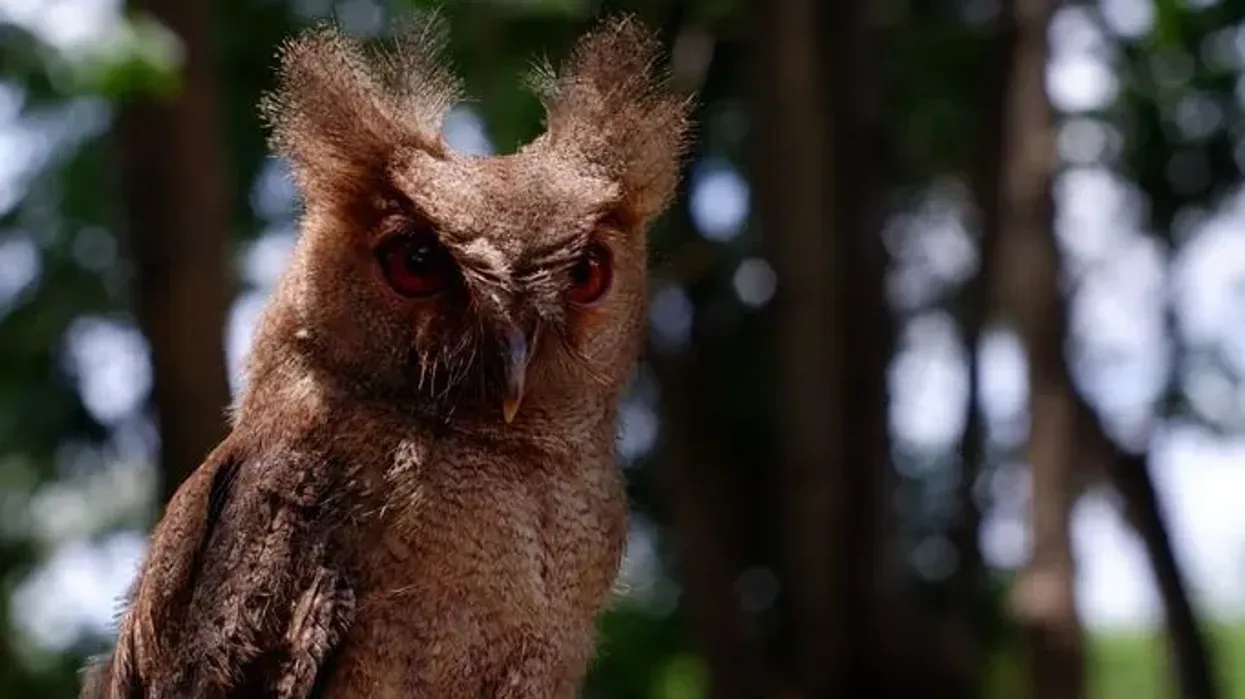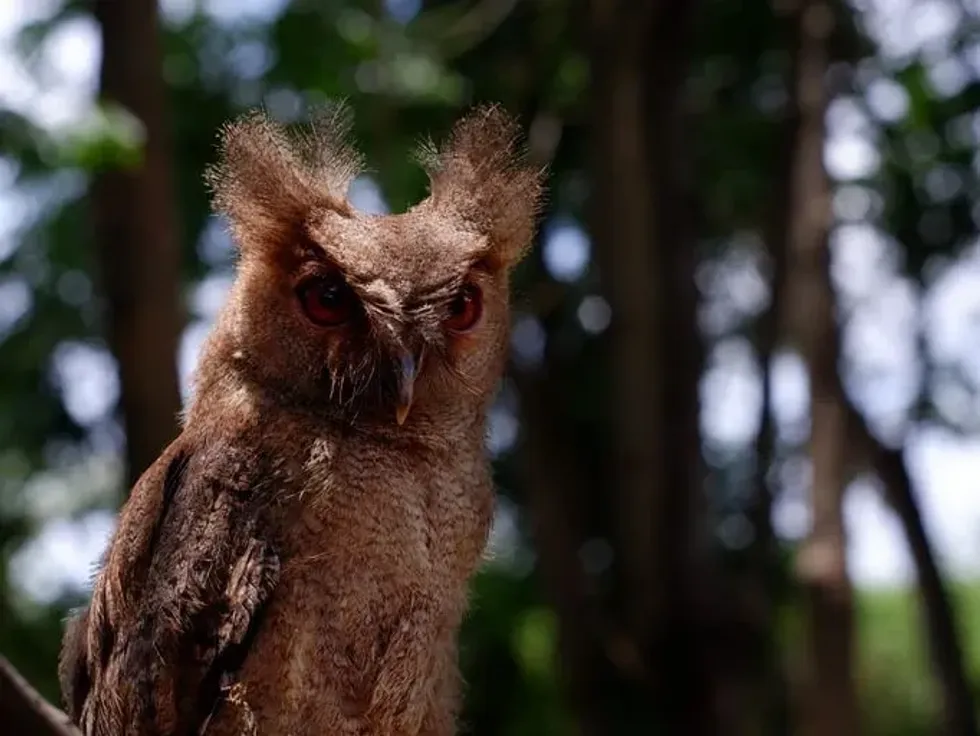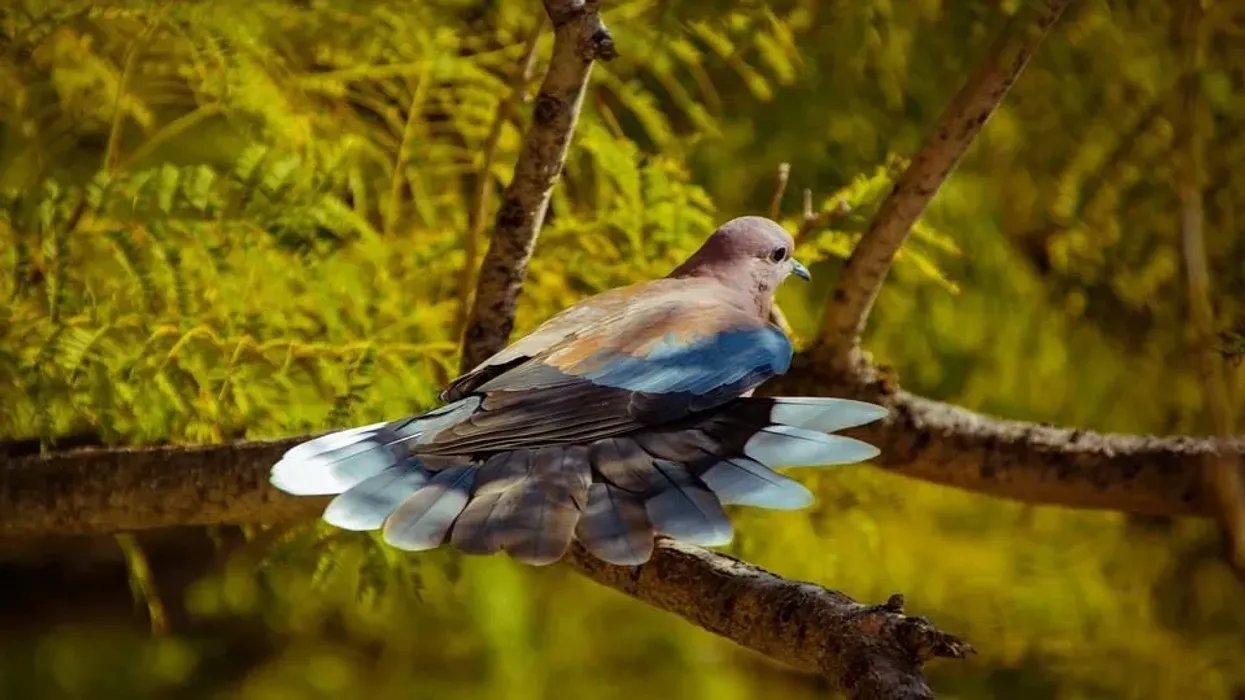The Philippines is home to a wide variety of species. The Philippine scops owl, Otus megalotis is endemic to the islands of the Philippines, hence its name.
This owl has three other subspecies and is part of the owl family Strigidae. They are often known as typical owls. The original description and genus name (megalotis) of this species were given by Walden (1875).
In Ancient Greek, the name 'megalotis' means 'long ears' and the genus name 'Otus' means 'eared owl'. Other names of this species include Whitehead's scops owl, the Luzon lowland scops owl, and the Otus Whitehead.
This is a medium-size owl in the Strigiformes order that has a limited distribution range. These birds live alone or in monogamous pairs. If you are someone who loves owls check out these articles on amaze-wing facts about whiskered screech owls and flammulated owls for more fun owl facts!
Philippine Scops Owl Interesting Facts
What type of animal is a Philippine scops owl?
The Philippine scops owl is a type of common bird of the Strigidae family and the order Strigiformes.
What class of animal does a Philippine scops owl belong to?
The Philippine scops owl (Otus megalotis) belongs to the Aves class and the Otus genus.
How many Philippine scops owls are there in the world?
Due to a lack of resources, a population count of these birds has not been recorded. However, they are quite common throughout their distribution range.
Where does a Philippine scops owl live?
This bird is endemic to the rainforests of the Philippines. They are spread across their limited range which includes Luzon, Marinduque, and the Catanduanes islands in the Philippines
What is a Philippine scops owl's habitat?
The habitat range of the Otus megalotis (Philippine scops owl) includes rainforests and woodland forests. These wild owls are common visitors found in moist montanes and they are spotted at elevations over 3281 ft (1000 m).
Who do Philippine scops owls live with?
The Philippine scops owl is not very sociable hence it leads a solitary life. However, some of these monogamous birds can be found living in pairs. In the last few days of breeding, they can be spotted as a family.
How long does a Philippine scops owl live?
The Philippine scops owl, Otus megalotis, leads a sedentary life. Not much is known about their lifespan.
How do they reproduce?
The Philippine scops owl is oviparous hence it reproduces by laying eggs and there is no specific breeding season as these birds tend to breed all through the year.
Females lay one to two eggs (very rarely three or four eggs) and these Philippine scops owl eggs are directly laid into tree holes or amidst a roost of dead trees. Both parents are thought to be involved in the incubation process.
The owlets are rusty red and they retain this color until they attain maturity, which happens in about two years.
What is their conservation status?
The Philippine scops owl (Otus megalotis) range is limited as the bird is endemic to the Philipines. Since they are wild birds, they aren't spotted much, however, their population is steady throughout their distribution range so they have been placed under the Least Concern category in the Red List of the International Union for Conservation of Nature (IUCN).
This species is estimated to face a decline of more than 10% in the next three generations.
Philippine Scops Owl Fun Facts
What do Philippine scops owls look like?
The Philippine scops owl is a common owl of the Strigidae family and it is a monomorphic, medium-sized owl. A narrow line that is black in color defines the facial disk, and the top of the head is pale whitish in color.
These birds have dark brown plumage and their ear tufts are quite unique, standing tall and long. The tips of their feathers are darker than the rest of their body.
They have huge enticing eyes that have a dark iris and an orange and red rim. Their feathers have light and dark streaks of brown which are also found in the ear tufts. Their breast and belly regions have zero to minimal dark streaks.
Their legs and feet are pretty thick with extremely sharp and curved dark talons that help them grasp their prey tightly without giving them opportunities to escape. The bill is curved and dark gray in color.
Juveniles start to show dark brown plumage and dark streaks after maturity, prior to which they are rusty red. All three subspecies show variations in morphology.
 We've been unable to source an image of a Philippine scops owl and have used an image of a collared scops owl instead. If you are able to provide us with a royalty-free image of a Philippine scops owl, we would be happy to credit you. Please contact us at hello@kidadl.com.
We've been unable to source an image of a Philippine scops owl and have used an image of a collared scops owl instead. If you are able to provide us with a royalty-free image of a Philippine scops owl, we would be happy to credit you. Please contact us at hello@kidadl.com.
How cute are they?
Their large facial disk, big orange eyes, and big ear tufts are all features that make the Philippine scops owl species distinct. The dark and light brown color found in their wings is also super cute!
How do they communicate?
The Philippine scops owl interacts with other owls using call notes which are especially prominent late at night. They are a noisy species with loud notes that range from three to six series, none of which are identical.
They begin softly and rapidly rise in volume until they reach the loudest notes. These notes sound like 'oik oiik oiiikk'. The vocal sounds of juvenile and adult birds are nearly identical.
How big is a Philippine scops owl?
This size of the Otus megalotis (Philippine scops owl) is 9-11 in (23-28 cm). It is two times bigger than the Sokoke scops owl.
How fast can a Philippine scops owl fly?
The Philippine scops owl (Otus megalotis) has rapid wingbeats and amazing flight skills. The precise speed at which they travel is unknown.
How much does a Philippine scops owl weigh?
This species weighs between 7-10.5 oz (200-300 g). The barn owl and the Philippine scops owl almost weigh the same.
What are their male and female names of the species?
They are referred to as a Philippine scops owl male and a Philippine scops owl female.
What would you call a baby Philippine scops owl?
A hatchling or juvenile is called a Philippine scops owl baby.
What do they eat?
For the Philippine scops owl, food in their diet mainly consists of insects and small mammals. This bird also sometimes hunts small reptiles. Due to their long ear tufts and large eyes, they have sharp visual and auditory senses which aid them greatly when they search for prey.
They are a fierce species and are skilled in ripping flesh. Their extremely pointy talons allow them to penetrate through the flesh of their prey when they capture them.
The half-dead prey is then killed by crushing the skull. This is done to ensure all bones are shattered and can be swallowed without difficulty. They are largely hunted by eagles, vultures, and hawks.
Are they dangerous?
The Philippine scops owl (Otus megalotis) is quite aggressive while hunting. Although there aren't any known cases of a human attack by these birds, they are wild birds that crush the skulls and bones of their prey so they are quite dangerous.
Would they make a good pet?
In many places, it is illegal to own an owl. Don't let the size and cuteness of the Philippine scops owl species deceive you. They are dangerous and can cause serious harm. They do not belong in a human environment and cannot be kept as pets.
Did you know...
Before hunting, the Philippine scops owl perches on tall trees during the day in an attempt to search and see their prey clearly.
The three recorded subspecies of this owl named by Walden (1875) are the Otus megalotis everetti, Otus megalotis megalotis and Otus megalotis nigrorum.
Despite their perfect camouflage in lowland regions, their big size ears often make them recognizable.
The order of this bird, Strigiformes, has more than 200 common species.
Are Philippine scops owls endangered?
The Philippine scops owl (Otus megalotis) species as named by Walden (1875) is not endangered. As per the IUCN Red List, this species has been placed in the Least Concern category.
Despite their small habitat range, their population is steady as they are in places filled with resources required for their survival. The population of this species will not face a rapid decrease in the near future but this might not be the case if they encounter the threat of habitat loss.
How do you identify a Philippine scops owl?
The most distinct feature of this species that sets it apart from every other owl in the world is its long ear tufts. The rich dark brown hues found in their feathers and the dark facial disk outline found in an adult Philippine scops owl are also pretty unique.
This is also one of those birds that are easily traceable by its vocal sounds.
Here at Kidadl, we have carefully created lots of interesting family friendly animal facts for everyone to discover! Learn more about some other birds including burrowing owl facts and rufous owl facts pages.
You can even occupy yourself at home by coloring in one of our free printable scops owl coloring pages.




 We've been unable to source an image of a Philippine scops owl and have used an image of a collared scops owl instead. If you are able to provide us with a royalty-free image of a Philippine scops owl, we would be happy to credit you. Please contact us at hello@kidadl.com.
We've been unable to source an image of a Philippine scops owl and have used an image of a collared scops owl instead. If you are able to provide us with a royalty-free image of a Philippine scops owl, we would be happy to credit you. Please contact us at hello@kidadl.com.



